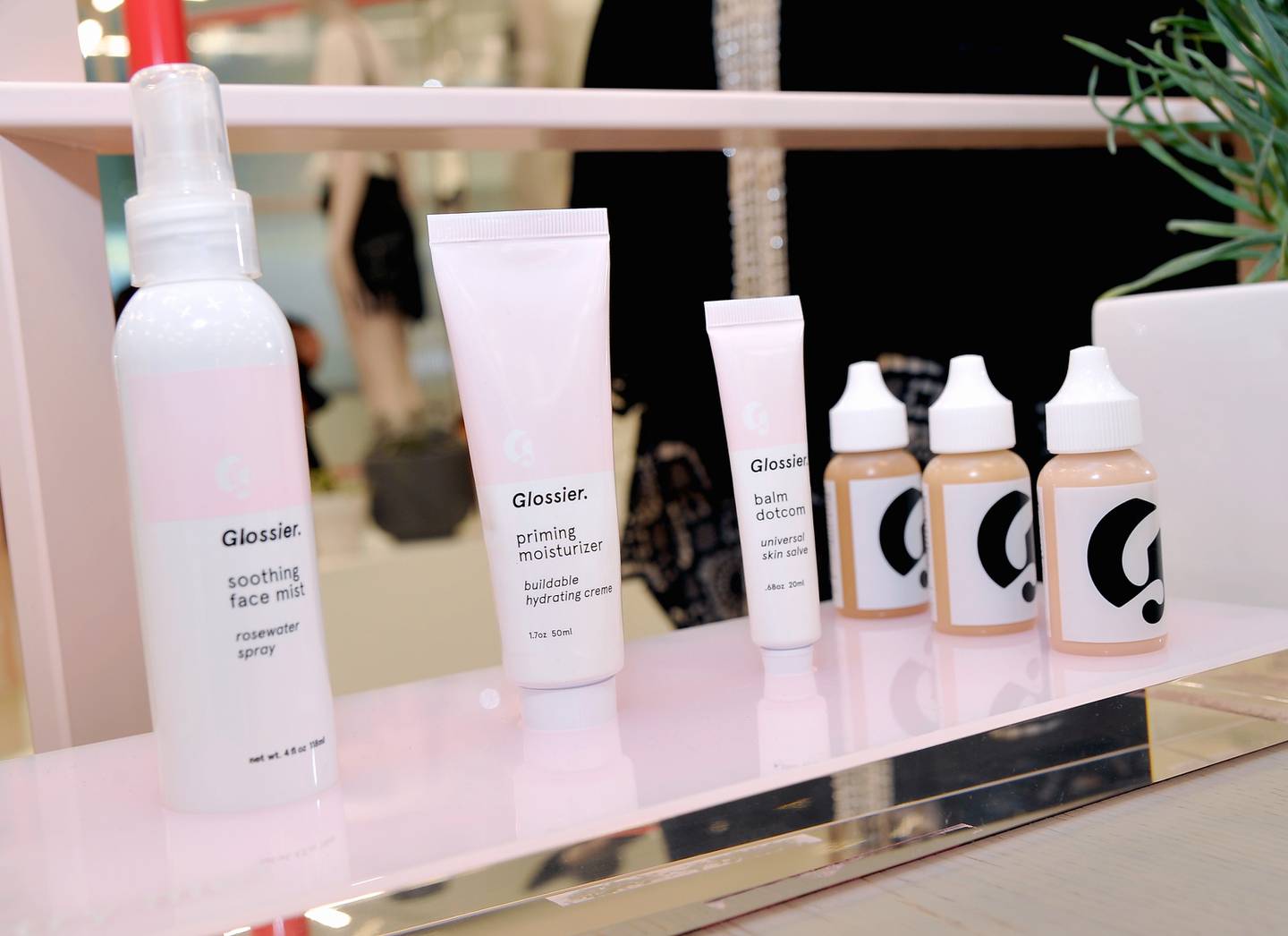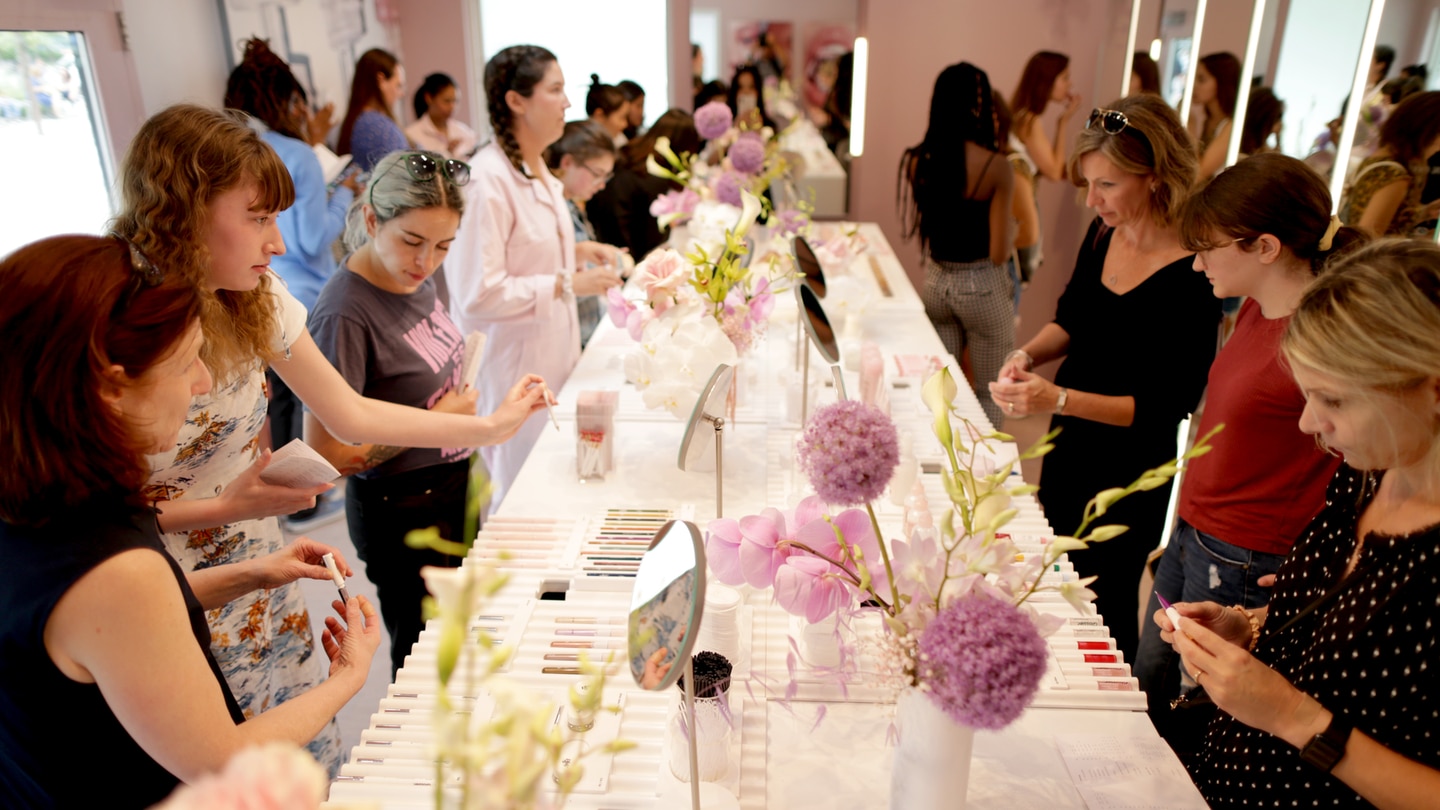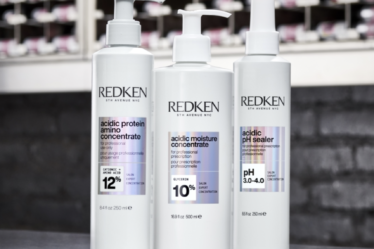
When Glossier launched in 2014, it was entirely new, both in its messaging — be you, just dewier — and its direct-to-consumer sales strategy, which at the time was an unconventional way to sell beauty.
Founder and chief executive Emily Weiss’ approach worked, and suddenly, Glossier became the gold standard for startups, who forewent once-coveted shelf space at department stores and Sephora in favour of selling to their customers directly.
Countless beauty labels mimicked Glossier’s heavy use of social media to connect with their “communities,” as well as its Millennial-friendly pink branding.
The buzz led to investment: To date, Glossier has raised $266 million in funding, including an $80 million Series E in July 2021 to build out its retail network, valuing the company at $1.8 billion.
But even as it reaffirmed its unicorn valuation last year, the company’s troubles were mounting. Glossier Play, a more pigmented and glittery makeup sub-brand launched in early 2019 to much fanfare, but failed to catch on and was quietly discontinued at the start of 2021. In August 2020, Outta the Gloss, a collective of anonymous, former retail employees, emerged to challenge the brand’s welcoming image. The group published an open letter on Medium and created an Instagram account to air grievances ranging from racism to toxic workplace culture.
In 2021, Glossier’s US sales decreased by 26 percent, year over year, according to Bloomberg Second Measure. Kym Davis, head of product development, and Ashley Mayer, vice president of communications, both departed last year. In November, the brand announced a slew of senior hires: a new chief financial officer and senior vice president of retail, and its first chief commercial officer.
And on Jan. 26, Glossier laid off about a third of its workforce, or more than 80 employees, which the company called a “difficult but necessary decision,” adding that “these changes leave us well-positioned as we continue to grow the brand long into the future.”
“We prioritised certain strategic projects that distracted us from the laser-focus we needed to have on our core business: scaling our beauty brand,” Weiss wrote in an internal email obtained by BoF. “We also got ahead of ourselves on hiring. These missteps are on me.”
Now, Glossier is challenged with rewriting the beauty playbook it helped define, breathing new life into branding that had grown stagnant, and drawing new, younger members into its customer community.
So how did Glossier get here?
Stagnant Messaging, Branding and Innovation
Weiss founded Glossier as an extension of her website, Into the Gloss, a popular beauty-focused publication. She introduced the brand in October 2014 with a set of four products — a “Balm Dotcom” salve, a moisturiser, a face mist and a skin tint, which at the time came in just three shades (today, there are 12). Each purchase came with cute stickers featuring the brand’s logo and products, which customers stuck on their phones and computers.
Glossier was one of the first founder-driven beauty lines that showed you didn’t need to be a global giant like L’Oréal or Estée Lauder to start a brand. Weiss’ Into the Gloss fanbase served as the foundation for the brand’s “community,” — namely, the people who would not only buy Glossier products, but talk up the brand on social media and line up around the block, rain or shine, outside a growing number of stores and pop-ups.
But for all the Glossier mania, the company’s messaging, the way it sells products and its branding remained a constant. While consistency can be a virtue in the world of consumer products, certain aspects of Glossier’s branding, including its Millennial pink-heavy color palette, looked increasingly dated.
The core message of embracing who you are and promoting dewy skin became as commonplace as ‘clean beauty.’ Glossier’s prime demographic, Millennials aged out of the brand, opting for more mature, elevated skin care and makeup labels, such as Nars and Charlotte Tilbury.
“When everyone says you are a ‘once-in-a-generation brand’ you could trick yourself into believing yours would be a brand that withstands the test of time,” said a beauty investor who requested anonymity. “So why change? Why evolve?”
Winning over the next generation of young consumers has proven difficult. The market for teens and twenty-somethings is more crowded than it was eight years ago. Other players like The Ordinary, Youth to the People and Kinship have gained popularity, while drugstore skin care mainstays like Cerave have seen a resurgence. New products didn’t resonate with Gen Z; teens don’t need retinol — the ingredient at the centre of Universal Pro-Retinol, one of Glossier’s biggest launches last year.
“Glossier stayed in this middle ground,” said Manola Soler, director at Alvarez & Marsal Consumer and Retail Group, a global consultancy. “It’s the same aesthetic but it’s not resonating the same way with new generations.”
Glossier did try something bolder, product wise, with Glossier Play, a line designed for the bold-browed, contour-loving fans of makeup brands like Huda Kattan and Anastasia Beverly Hills. But the timing was off. Play’s debut came during a period when makeup use was in decline. Two years later, the pandemic’s skin care obsession has given way to a makeup renaissance, including the expressive looks and colours Play was meant for. But the line was discontinued in January 2021.
“When everyone says you are a ‘once-in-a-generation brand’ you could trick yourself into believing yours would be a brand that withstands the test of time. So why change? Why evolve?”
Beauty’s Retail Evolution
Glossier’s problems signal bigger challenges for the DTC model itself.
Once, the ultimate sign of a ‘cool’ beauty brand was that it was available exclusively through its own website, or perhaps the occasional pop-up shop. But most consumers still prefer to shop for beauty products in person, whether it’s a specialty retailer like Sephora or the nearest Target.
Selling direct-to-consumer — which accounts for 80 percent of Glossier’s sales — is also expensive. The brand once had an edge over potential rivals in that its customers were more likely to return, reducing the need to bombard them with ads on social media, or rely on promotions. But that advantage has eroded.
Michael Maloof, director of analytics at Earnest Research, said Glossier’s once “top of class” retention rate – shoppers who returned to make a second purchase the following month – for new online customers plummeted from 15 percent in November 2019 to 5 percent in November 2021.
Overall, holiday sales online dropped 22 percent from 2020, according to an Earnest Research analysis of credit card data between Nov. 1 and Dec. 29.
Glossier, which has an annual sale at the kickoff of the holiday season, added a second sale last June to bolster revenue. Of the new customers acquired in June, just four percent purchased again in July, and by September, one percent of that group shopped on the brand’s site.
“In the three months after [the sale], those new customers basically all left,” Maloof said.
More traditional players have also stepped up their beauty game. Ulta Beauty has brought on Gen-Z favourite brands like Morphe and Kylie Cosmetics. Target, Kohl’s and Walmart invested heavily in their beauty departments, including shop-in-shops with Ulta (Target) and Sephora (Kohl’s). Walmart brought in about 100 new beauty brands last year.
Glossier isn’t sold at any of these places. The brand opened three stores in Seattle, Los Angeles and London late last year, after New York and Los Angeles flagships and a London pop-up closed in March 2020.
“They have to be where they’re going to be discovered,” said Marie Driscoll, managing director of luxury and fashion at Coresight Research.
But even if Glossier continues to open more locations, which is the plan, a Glossier store, no matter how Instagrammable it may be, can’t compete with the selection available at Ulta, or increasingly even Walmart.
“Scaling is the name of the game, but it seems Glossier may have maxed out on DTC,” added Soler.

A Changing Startup and Venture Space
Glossier’s investors have limited options unless the brand can turn itself around.
With a valuation of nearly $2 billion, Glossier is too expensive to be an attractive acquisition target, and the brand has raised too much money to sell for significantly less than that. Going public would also be difficult. Among the direct-to-consumer brands that have held initial public offerings in the last two years, including Warby Parker and Allbirds, most are trading well below their debut price.
Meanwhile, conglomerates are seeking out smaller brands that have faster paths to profitability and wider distribution networks. Youth to the People, a Gen-Z skin care favourite that’s raised far less capital than Glossier, was acquired by L’Oréal in December for over $300 million. It’s said to be a break-even business.
Glossier could raise more money and hope the market rebounds, or buy smaller companies to fill in gaps in its lineup. The simplest path to growth may be to embrace a strategy Glossier was built to avoid: launch in a major retailer. Some experts predict this will happen by the end of 2022.
“The last two years should have been a time when Glossier did amazingly. Everyone was moving online, and online is the majority of their business,” Soler said. “They were there, they started there and they should have had that down.”


